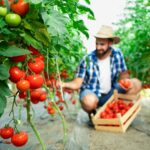For South African farmers, livestock breeding is a cornerstone of agricultural success, influencing productivity, profitability, and genetic improvement. However, breeding livestock involves careful planning and management, and common mistakes can lead to reduced herd quality, poor reproductive performance, and financial losses. Avoiding these pitfalls is essential for maintaining healthy and productive livestock. Below are 10 common mistakes in livestock breeding and how to avoid them.
1. Failing to Plan a Breeding Program
Without a clear breeding program, farmers may inadvertently compromise herd quality. Random breeding or selecting animals without considering their genetic traits can lead to undesirable outcomes.
Solution:
Develop a breeding program with specific goals, such as improving milk production, growth rates, or disease resistance. Work with a veterinarian or breeding specialist to select animals with the desired traits.
2. Using Unhealthy Breeding Stock
Breeding from animals with poor health, low fertility, or genetic defects reduces the chances of producing strong offspring.
Solution:
Select healthy, disease-free breeding stock with proven fertility. Conduct regular health checks and ensure animals are vaccinated and dewormed before breeding.
3. Overlooking Genetic Diversity
Excessive inbreeding can result in reduced fertility, slower growth rates, and higher susceptibility to diseases.
Solution:
Introduce new genetics to the herd periodically. Use techniques like artificial insemination (AI) to access superior genetic material from diverse sources.
4. Improper Nutrition for Breeding Animals
Poor nutrition negatively affects fertility, pregnancy outcomes, and the health of newborns.
Solution:
Provide breeding animals with balanced diets rich in protein, energy, vitamins, and minerals. Ensure pregnant and lactating animals receive adequate nutrition to support their needs and the growth of offspring.
5. Ignoring Heat Cycles and Timing
Miscalculating or missing the optimal time for breeding can result in failed pregnancies or delayed production cycles.
Solution:
Track the heat cycles of your livestock carefully. Use visual signs like swelling and behavioral changes or invest in heat detection devices for accuracy.
6. Neglecting Artificial Insemination (AI)
Relying solely on natural mating can limit genetic progress and expose animals to injuries or diseases during mating.
Solution:
Incorporate artificial insemination into your breeding program to access high-quality genetics and reduce mating risks.
7. Inadequate Housing and Handling Facilities
Poor facilities can lead to stress and injuries, negatively affecting fertility and breeding outcomes.
Solution:
Provide clean, spacious, and comfortable housing for breeding animals. Ensure handling facilities are well-maintained and designed to minimize stress during breeding and pregnancy checks.
8. Not Monitoring Pregnant Animals Closely
Failing to monitor pregnant animals can result in complications during calving or lambing, leading to losses.
Solution:
Regularly check the health and condition of pregnant animals. Be prepared for birthing with proper facilities, equipment, and veterinary support.
9. Overbreeding or Underbreeding
Overbreeding can stress animals and lead to reduced fertility, while underbreeding can slow genetic improvement and herd productivity.
Solution:
Maintain an appropriate breeding schedule based on the species and individual animal conditions. Avoid breeding animals too young or too frequently.
10. Ignoring Record-Keeping
Poor record-keeping makes it difficult to track genetic progress, fertility rates, and breeding outcomes.
Solution:
Keep detailed records of breeding dates, animal pedigrees, fertility rates, and offspring performance. Use software or mobile apps for easy tracking and analysis.
Effective livestock breeding is a long-term commitment that requires careful planning, proper management, and attention to detail. By avoiding these common mistakes, South African farmers can improve their herds’ genetic quality, reproductive success, and overall productivity. Regular consultation with veterinary and breeding experts, combined with strategic use of advanced techniques like AI, will ensure sustainable growth and profitability in livestock farming.
Join 'Farmers Mag' WhatsApp Channel
Get the latest Farming news and tips delivered straight to your WhatsApp
CLICK HERE TO JOIN






